President Woodrow Wilson in 1914 opened a maritime project to support petrochemicals.
The Houston Ship Channel, the “port that built a city,” opened for ocean-going vessels on November 10, 1914, making Texas home to a world-class commercial port. President Woodrow Wilson saluted the occasion from his desk in the White House by pushing an ivory button wired to a cannon in Houston.
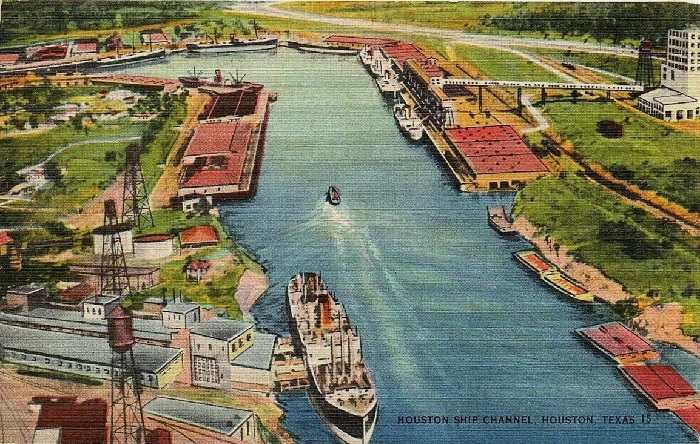
A 1950 postcard of the Houston Ship Channel, which officially opened on November 10, 1914, as an ocean-vessel waterway linking Houston, the San Jacinto River, Galveston Bay, and the Gulf of Mexico.
The National Anthem played from a barge in the center of the Turning Basin as Sue Campbell, daughter of Houston Mayor Ben Campbell, sprinkled white roses into the water, according to a Port of Houston historian.
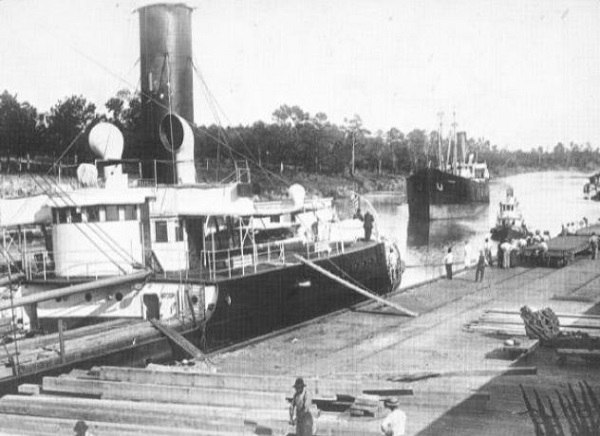
An image from a 1915 postcard of the Houston Ship Channel. One year earlier, President Woodrow Wilson officially opened the newly dredged waterway. Photo courtesy Fort Bend Museum, Richmond, Texas.
“I christen thee Port of Houston; hither the boats of all nations may come and receive a hearty welcome,” Campbell proclaimed.
The bayou had been used to ship goods to the Gulf of Mexico as early as the 1830s. The American Society of Civil Engineers (ASCE) described the original waterway — known as Buffalo Bayou — as “swampy, marshy and overgrown with dense vegetation.”
“Steamboats and shallow-draft vessels were the only boats able to navigate the complicated channel, noted ASCE, adding that in 1909, Harris County citizens formed a navigation district (an autonomous governmental body for supervising the port) and issued bonds to fund half the cost of dredging the channel.
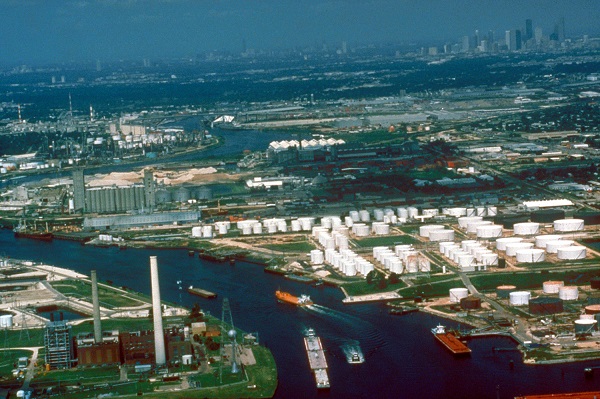
The Houston Ship Channel on Buffalo Bayou leads upstream to Houston – where downtown can be seen at top right. Photo courtesy U.S. Army Corps of Engineers Digital Visual Library.
According to the Port of Houston Authority of Harris County, in 1937 the steamship Laura traveled from Galveston Bay up Buffalo Bayou to what is now Houston.
The steamship’s trip, in water no deeper than six feet, proved the bayou was navigable by sizable vessels and established a commercial link between Houston and ports around the world
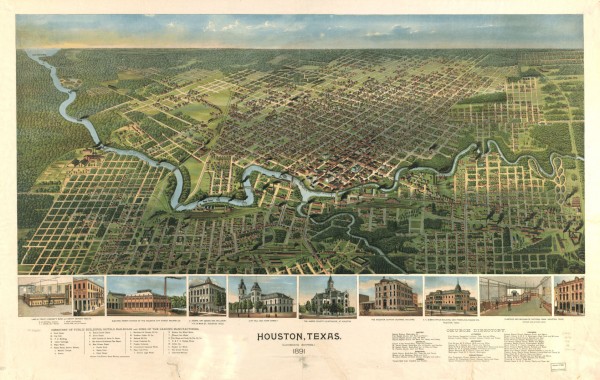
A “Bird’s Eye” view of Houston in 1891. Today’s Port of Houston is ranked first in foreign cargo and among the largest ports in the world. Map image courtesy Amon Carter Museum, Fort Worth, Texas.
“With the discovery of oil at Spindletop in 1901 and crops such as rice beginning to rival the dominant export crop of cotton, Houston’s ship channel needed the capacity to handle newer and larger vessels,” reported the Port Authority, administrator of the channel.
Harris County voters in January 1910 overwhelmingly approved dredging their ship channel to a depth of 25 feet for $1.25 million. The U.S. Congress provided matching funds. As work began in 1912, similar giant maritime projects included construction of the Panama Canal and the Gulf Intracoastal Waterway.
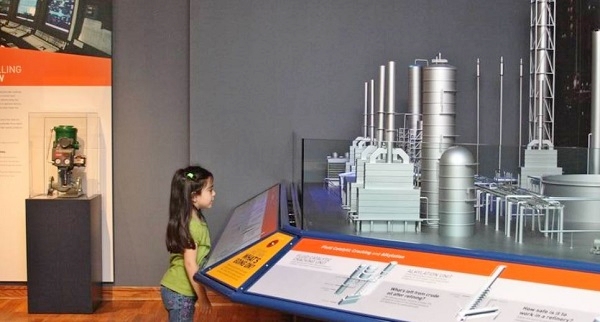
An oil museum in Beaumont, Texas, includes petroleum science and refinery exhibits for educating young people about the Port of Houston. Photo courtesy The Texas Energy Museum.
By 1930, eight refineries were operating along the deep water channel, ASCE notes. The area eventually supported massive petrochemical complexes along the shoreline of processing facilities and oil refineries, including ExxonMobil’s Baytown Refinery.
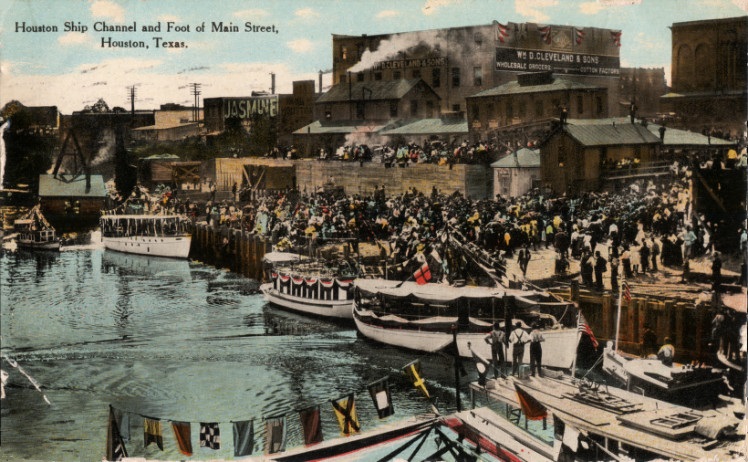
A circa 1910 postcard of the Houston Ship Channel and foot of Main Street, Houston, Texas, S. H. Kress & Co., courtesy University of Houston Digital Library.
Under continuous development since its original construction, the Houston Ship Channel has been extended to reach 52 miles with a depth of 45 feet and a width of up to 530 feet. It travels from the Gulf through Galveston Bay and up the San Jacinto River, ending four miles east of downtown Houston.
Although the dredging vessel Texas first signaled by whistle the channel’s completion on September 7, 1914, the official opening date has remained when Sue Campbell sprinkled her white roses and President Wilson remotely fired his cannon.
With refineries and expanded liquified terminals for exporting natural gas (LNG), the Texas waterway has grown into one of the largest petrochemical facilities in the world.
_______________________
Recommended Reading: Sheer Will: The Story of the Port of Houston and the Houston Ship Channel (2014). Your Amazon purchase benefits the American Oil & Gas Historical Society. As an Amazon Associate, AOGHS earns a commission from qualifying purchases.
_______________________
The American Oil & Gas Historical Society (AOGHS) preserves U.S. petroleum history. Please become an AOGHS annual supporter and help maintain this energy education website and expand historical research. For more information, contact bawells@aoghs.org. Copyright © 2024 – Bruce A. Wells. All rights reserved.
Citation Information: Article Title – “Houston Ship Channel of 1914.” Authors: B.A. Wells and K.L. Wells. Website Name: American Oil & Gas Historical Society. URL: https://aoghs.org/transportation/houston-ship-channel. Last Updated: November 18 2024. Original Published Date: November 25, 2014.



